“We Are Danbury” Media Campaign Launches Drive for Businesses, Residents
/Labelled “confidential and proprietary,” the city of Danbury’s “Playbook” for becoming a “City of the Future” is posted on the official website for all to see. That playbook came to mind with the announcement earlier this month that CityCenter Danbury would be launching a media campaign this month to promote the city’s downtown.
The campaign will initially include two 15-second videos and photos posted to various well-travelled websites. Among those featured in the video are Mayor Mark Boughton, the Danbury Titans hockey team, the Palace Danbury, Connecticut Institute for Community and Western Connecticut State University, according to published reports. Additional videos featuring other businesses are to be featured later, as the campaign continues.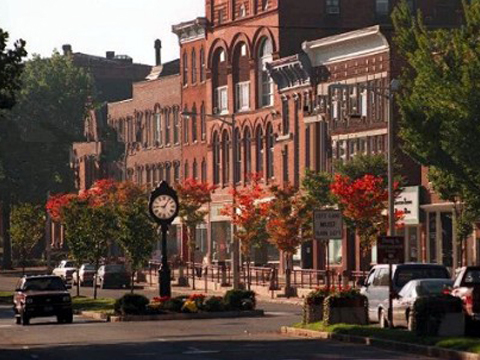
CityCenter Danbury is a partnership promoting Downtown Danbury, bringing together property owners, sponsors, businesses, non-profits, cultural arts, and volunteers.
“This campaign is to proactively go out and approach businesses to let them know downtown Danbury is the place to be,” P.J. Prunty, executive director of CityCenter Danbury, told the News-Times. “It’s the first time we’ve embarked on a specific campaign like this. We want to get businesses to plant their flag in downtown.”
According to Business Insider earlier this year, population estimates released by the U.S. Census Bureau indicate that Danbury grew more than any city in Connecticut from July 1, 2014 through July 1, 2015 going from 83,891 to 84,657, is a .9% population increase. That outpaced Stamford, Milford, Norwalk and New Haven, Connecticut’s five fastest growing cities.
Prunty said the campaign will specifically target lower Fairfield County and Westchester County, N.Y., to try to lure companies from those areas to downtown Danbury where the rents, city services, cost of living and taxes are lower, the News-Times reported. A targeted campaign on social media will emphasize the housing as well as business options downtown. 
The campaign initiative will include brochures targeting young professionals and entrepreneurs, in an effort to increase their presence – living and working – in the city. “We’re trying to convey that now is the time to strike while the iron is hot. We’re focusing on business recruitment,” Prunty said.
Some would suggest the effort is an outgrowth from the city’s Playbook, which states its intent to “help the City get started with practical and tangible strategic moves, or “plays,” that the City can begin implementing. Six themes were highlighted in the 17-page guide, completed last year: governance, transformation of education, innovative service delivery, transparency, sustainability, and re-imagined quality of life.
The playbook, which focuses on changes to the way in which city government does business, also notes that “to be the City of the Future, we must become rich in spirit and culture, everready to overcome all challenges and realize all opportunities facing the 21st century city.” The report, prepared by the Connecticut-based consulting firm BlumShapiro, goes on to state that “by going above and beyond, Danbury is the creative and cultural center in the region.”
 The playbook is included on the website of the city’s Office of Project Excellence, formed a year ago and led by Stephen Nocera, who previously was chief administrative officer in Stratford. The Office’s most recent Steering Committee meeting, in February (according to minutes posted on the city’s website) included items such as a new communications website, restaurant week and streetlight purchases.
The playbook is included on the website of the city’s Office of Project Excellence, formed a year ago and led by Stephen Nocera, who previously was chief administrative officer in Stratford. The Office’s most recent Steering Committee meeting, in February (according to minutes posted on the city’s website) included items such as a new communications website, restaurant week and streetlight purchases.
As a member of the National Historic Preservation and the Connecticut Main Street Center, CityCenter follows the four principles of design, organization, promotion and economic restructuring. “We strive to accelerate the renewal of the city’s urban core, with quality of life as the underlying theme: building a lasting constituency for downtown; supporting investors, retailers and tenants while retaining those already downtown and making downtown clean, safe and attractive,” the organization’s website points out.
Danbury is certainly not alone among Connecticut communities – large and small – that are stepping up efforts to attract residents and businesses.
Neighboring New Milford announced plans last year to fund a branding and marketing effort with grant funds, spurred by local businesses seeking to draw more people to their downtown area. Local officials stressed that New Milford has the longest green of any town in Connecticut, along with historic architecture and an eclectic mix of shops and artistic offerings. The grant was issued through the Connecticut Main Street Center.
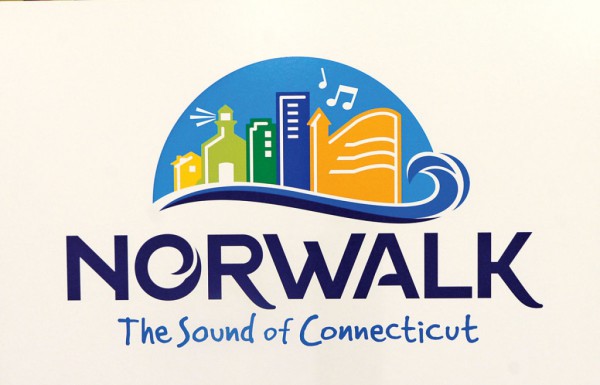 In lower Fairfield County, the city of Norwalk launched a rebranding initiative earlier this year. Using the new slogan “The Sound of Connecticut,” the campaign, according to Mayor Harry Rilling “was necessary to help reposition Norwalk. Our visual brand and identity system will become a recognized symbol of Norwalk’s progressive and connected vibe. We understand and live the brand’s values, goals and promises on a daily basis.” The Mayor added that “our brand strategy will influence and shape the way the community and others think, feel and respond to the City of Norwalk.”
In lower Fairfield County, the city of Norwalk launched a rebranding initiative earlier this year. Using the new slogan “The Sound of Connecticut,” the campaign, according to Mayor Harry Rilling “was necessary to help reposition Norwalk. Our visual brand and identity system will become a recognized symbol of Norwalk’s progressive and connected vibe. We understand and live the brand’s values, goals and promises on a daily basis.” The Mayor added that “our brand strategy will influence and shape the way the community and others think, feel and respond to the City of Norwalk.”







 Funding for the competition prize awards will be provided both by the State of Connecticut, which has committed $1 million, and an additional $2 million commitment from private partners. The Doris Duke Charitable Foundation, The Kresge Foundation, Living Cities, NeighborWorks America, The United Illuminating Company, Stanley Black & Decker, Boehringer Ingelheim, Travelers Companies, Inc., The Hartford Foundation for Public Giving, Webster Bank, Eversource Energy, Liberty Bank Foundation, Hartford HealthCare, Barnes Group, Hoffman BMW of Watertown/Hoffman Auto Group, United Technologies Corp., Charter Communications, and Fairfield County’s Community Foundation have all committed to participating in the challenge.
Funding for the competition prize awards will be provided both by the State of Connecticut, which has committed $1 million, and an additional $2 million commitment from private partners. The Doris Duke Charitable Foundation, The Kresge Foundation, Living Cities, NeighborWorks America, The United Illuminating Company, Stanley Black & Decker, Boehringer Ingelheim, Travelers Companies, Inc., The Hartford Foundation for Public Giving, Webster Bank, Eversource Energy, Liberty Bank Foundation, Hartford HealthCare, Barnes Group, Hoffman BMW of Watertown/Hoffman Auto Group, United Technologies Corp., Charter Communications, and Fairfield County’s Community Foundation have all committed to participating in the challenge. “We are pleased to bring the Working Cities Challenge to Connecticut and are thankful to Governor Malloy for his support of the effort, as well as the Hartford Foundation, the Doris Duke Foundation, Living Cities, The Kresge Foundation, and many others,” Boston Fed President Eric Rosengren said. “The partners have come together to make it possible to bring the competition to Connecticut – precisely the model of cross-sector collaboration that forms the basis of the Working Cities Challenge. This competition focuses on the residents of the state’s postindustrial cities – places with unique assets that taken together can help to build civic leadership infrastructure, which our research shows is a key component of economic resurgence.”
“We are pleased to bring the Working Cities Challenge to Connecticut and are thankful to Governor Malloy for his support of the effort, as well as the Hartford Foundation, the Doris Duke Foundation, Living Cities, The Kresge Foundation, and many others,” Boston Fed President Eric Rosengren said. “The partners have come together to make it possible to bring the competition to Connecticut – precisely the model of cross-sector collaboration that forms the basis of the Working Cities Challenge. This competition focuses on the residents of the state’s postindustrial cities – places with unique assets that taken together can help to build civic leadership infrastructure, which our research shows is a key component of economic resurgence.” “It’s gratifying to see the strong support from Connecticut companies, foundations, and the Malloy administration for the Working Cities Challenge under the thoughtful leadership of the Boston Fed,” James C. Smith, Chairman and CEO of Webster Bank, said. “By encouraging the development of civic infrastructure as a prerequisite to physical infrastructure, the Working Cities Challenge promises to revitalize Connecticut’s smaller cities economically and transform the lives of inner city residents.”
“It’s gratifying to see the strong support from Connecticut companies, foundations, and the Malloy administration for the Working Cities Challenge under the thoughtful leadership of the Boston Fed,” James C. Smith, Chairman and CEO of Webster Bank, said. “By encouraging the development of civic infrastructure as a prerequisite to physical infrastructure, the Working Cities Challenge promises to revitalize Connecticut’s smaller cities economically and transform the lives of inner city residents.”
 A recent report in Business Insider indicated that one in three new businesses in the U.S. were started by an entrepreneur age 50 or older. Describing “running a business as the new retirement,” the news report cited an infographic in easylifecover that highlighted those aged 55-64 in the U.S. have actually had the highest rate of entrepreneurial activity in the last 10 years, noting that the founders of McDonald's, Coca Cola, and Kentucky Fried Chicken – among others - were all over 50 when they established their businesses.
A recent report in Business Insider indicated that one in three new businesses in the U.S. were started by an entrepreneur age 50 or older. Describing “running a business as the new retirement,” the news report cited an infographic in easylifecover that highlighted those aged 55-64 in the U.S. have actually had the highest rate of entrepreneurial activity in the last 10 years, noting that the founders of McDonald's, Coca Cola, and Kentucky Fried Chicken – among others - were all over 50 when they established their businesses. The interactive “Boot Camp” event at reSET – open to people of all ages with a special focus on the 50 and over –included short presentations from local resource organizations, networking opportunities and valuable information on the programs and tools available to potential business owners. Attendees were updated on the necessary steps and tools to launch a business, and had opportunities to talk one-on-one with local mentoring organizations, lenders, small business advisors and community leaders for advice and assistance.
The interactive “Boot Camp” event at reSET – open to people of all ages with a special focus on the 50 and over –included short presentations from local resource organizations, networking opportunities and valuable information on the programs and tools available to potential business owners. Attendees were updated on the necessary steps and tools to launch a business, and had opportunities to talk one-on-one with local mentoring organizations, lenders, small business advisors and community leaders for advice and assistance. hand at the reSET event in mid-June were representatives of the Office of Secretary of State (where new businesses are registered),
hand at the reSET event in mid-June were representatives of the Office of Secretary of State (where new businesses are registered),  reSET serves all entrepreneurs, but specializes in social enterprise ― impact driven business with a double and sometimes triple bottom line. In addition to providing co-working space and accelerator and mentoring programs, reSET aims to inspire innovation and community collaboration, and to support entrepreneurs in creating market-based solutions to community challenges. The organization’s goal is to “meet entrepreneurs wherever they are in their trajectory and to help them take their businesses to the next level.”
reSET serves all entrepreneurs, but specializes in social enterprise ― impact driven business with a double and sometimes triple bottom line. In addition to providing co-working space and accelerator and mentoring programs, reSET aims to inspire innovation and community collaboration, and to support entrepreneurs in creating market-based solutions to community challenges. The organization’s goal is to “meet entrepreneurs wherever they are in their trajectory and to help them take their businesses to the next level.”


 In addition to its impact on drivers, the AMA notes that blue-rich LED streetlights operate at a wavelength that most adversely suppresses melatonin during night. It is estimated that white LED lamps have five times greater impact on circadian sleep rhythms than conventional street lamps, the AMA indicated. Recent large surveys, according to the AMA, found that brighter residential nighttime lighting is associated with reduced sleep times, dissatisfaction with sleep quality, excessive sleepiness, impaired daytime functioning and obesity.
In addition to its impact on drivers, the AMA notes that blue-rich LED streetlights operate at a wavelength that most adversely suppresses melatonin during night. It is estimated that white LED lamps have five times greater impact on circadian sleep rhythms than conventional street lamps, the AMA indicated. Recent large surveys, according to the AMA, found that brighter residential nighttime lighting is associated with reduced sleep times, dissatisfaction with sleep quality, excessive sleepiness, impaired daytime functioning and obesity.
 The Conversation website is a collaboration between editors and academics to provide "informed news analysis and commentary that’s free to read and republish." It
The Conversation website is a collaboration between editors and academics to provide "informed news analysis and commentary that’s free to read and republish." It 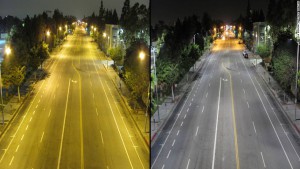 PHOTO: Traditional street lighting (left) vs. LED lighting (right).
PHOTO: Traditional street lighting (left) vs. LED lighting (right).
 “Wholesome Wave is thrilled by the innovations that USDA is supporting through the new FINI grants, which are taking the work of increasing affordable access to healthy food to even greater levels of impact,” said Michel Nischan, CEO & Founder of Wholesome Wave. “So many SNAP shoppers are working parents with limited time to source healthier food choices. Through the new Farm-to-Grocery model, our partners in Connecticut and Vermont will be able to expand affordable access to SNAP consumers in a way that allows them to find and purchase more healthy food from a variety of retailers.”
“Wholesome Wave is thrilled by the innovations that USDA is supporting through the new FINI grants, which are taking the work of increasing affordable access to healthy food to even greater levels of impact,” said Michel Nischan, CEO & Founder of Wholesome Wave. “So many SNAP shoppers are working parents with limited time to source healthier food choices. Through the new Farm-to-Grocery model, our partners in Connecticut and Vermont will be able to expand affordable access to SNAP consumers in a way that allows them to find and purchase more healthy food from a variety of retailers.”

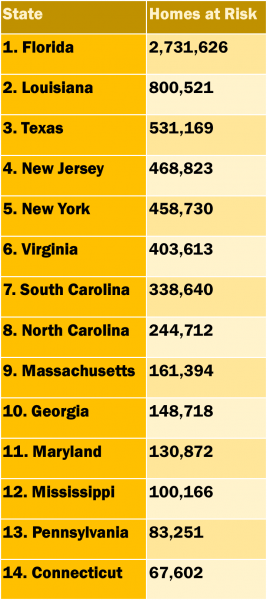 Among neighboring states, Connecticut ranked behind Massachusetts, New York and New Jersey.
Among neighboring states, Connecticut ranked behind Massachusetts, New York and New Jersey.
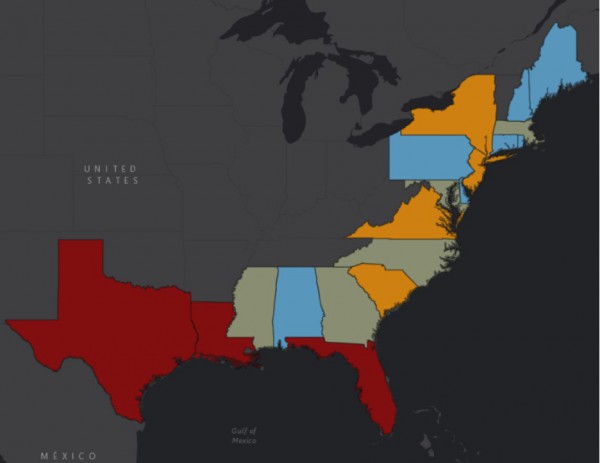


 rs Commission. Replacing them will be the Commission on Women, Children and Seniors and a Commission that merges the Latino, African-American and Asian Pacific American Commissions.
rs Commission. Replacing them will be the Commission on Women, Children and Seniors and a Commission that merges the Latino, African-American and Asian Pacific American Commissions.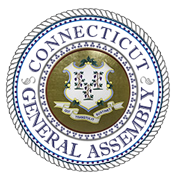


 The Latino and Puerto Rican Affairs Commission (LPRAC) was created by an act of the Connecticut General Assembly (CGA) in 1994. This 21 member non-partisan commission is mandated to make recommendations to the CGA and the Governor for new or enhanced policies that will foster progress in achieving health, safety, educational success, economic self-sufficiency, and end discrimination in Connecticut. As of 2014, the state’s Hispanic population exceeded 500,000, about 15 percent of the state’s overall population.
The Latino and Puerto Rican Affairs Commission (LPRAC) was created by an act of the Connecticut General Assembly (CGA) in 1994. This 21 member non-partisan commission is mandated to make recommendations to the CGA and the Governor for new or enhanced policies that will foster progress in achieving health, safety, educational success, economic self-sufficiency, and end discrimination in Connecticut. As of 2014, the state’s Hispanic population exceeded 500,000, about 15 percent of the state’s overall population. ”
”


























